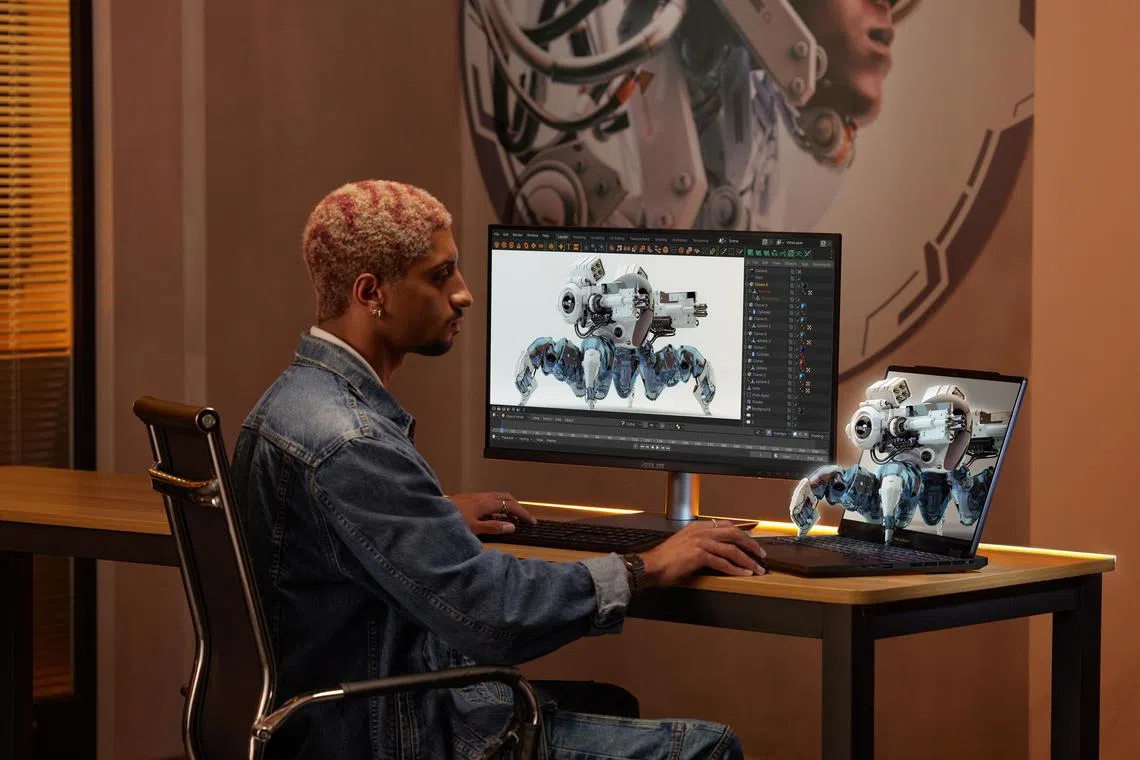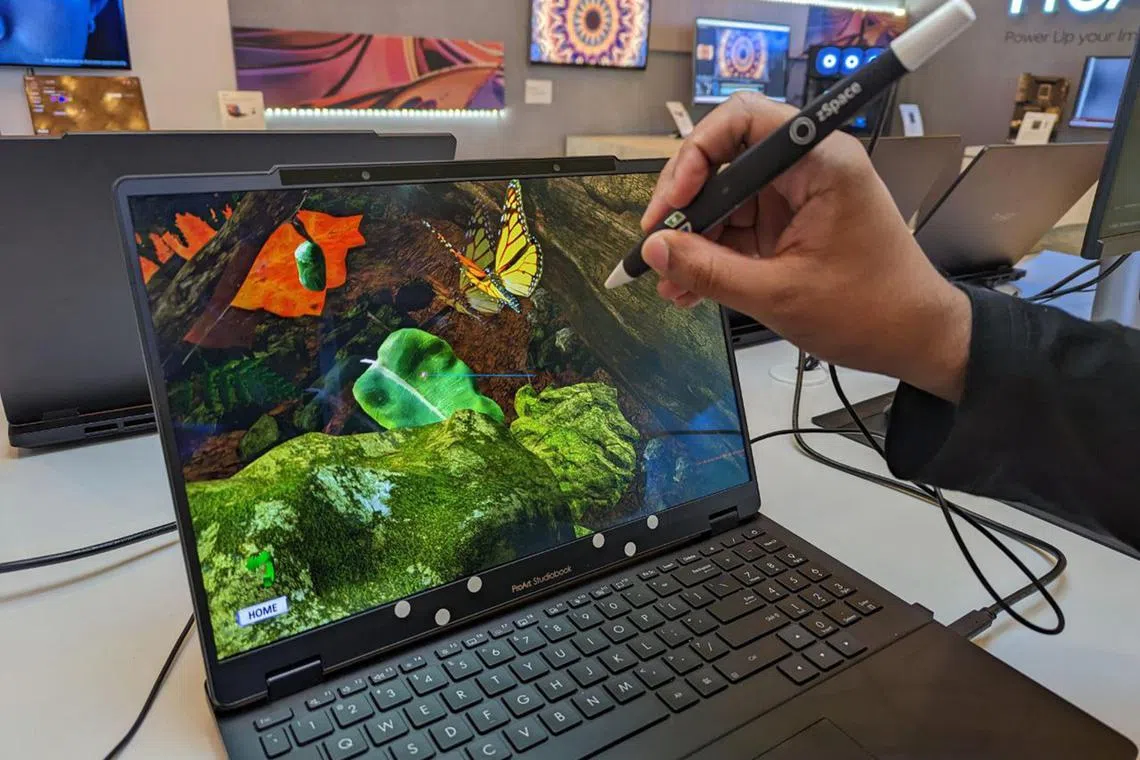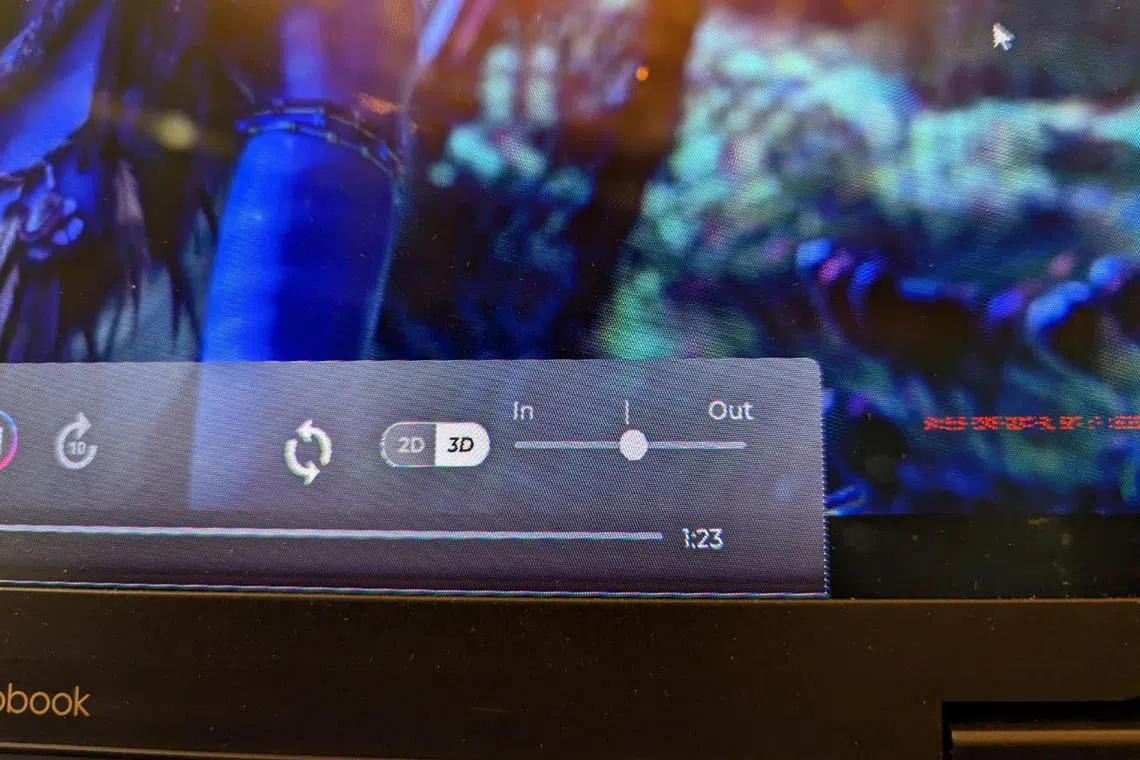CES 2023: Asus laptops let you view 3D images without chunky glasses
Sign up now: Get ST's newsletters delivered to your inbox

Visuals are given real depth thanks to a technology that angles light from the screen to each of the user’s eyes.
PHOTO: ASUS
Follow topic:
LAS VEGAS – The 3D images in movies or theme park rides are usually novel at first but headache-inducing a while later, due to images that are often blurry.
Asus has launched a pair of 3D-enabled laptops that seemingly overcome the typical problems that mar the 3D viewing experience. Best of all, users will not need 3D glasses to view the 3D screen.
Visuals are given real depth thanks to the Taiwanese manufacturer’s Spatial Vision technology, which angles light from the screen to each of the user’s eyes when its 3D setting is turned on.
The laptop’s camera tracks the eyes and adjusts its frames accordingly, ensuring the user can perceive the 3D image accurately and almost distortion-free. This is as long as the user is within a reasonable distance from the laptop – of roughly up to 45 degrees off the centre of the display, said an Asus spokesman.
The 3D images have to be perceived by the eyes and are unable to be captured on cameras.
These laptops – the Asus ProArt Studiobook 16 3D Oled and Vivobook Pro 16X 3D Oled – were among a slew of Asus devices announced at the Consumer Electronics Show (CES) 2023
During a hands-on session with the Studiobook, its screen was slightly distorted at first glance while the laptop’s camera took a moment to track my eyes, as a 3D version of science-fiction film Avatar played as part of the demo.
But once calibrated, the image sharpened and appeared as if it had real distance between the characters in the foreground and the background.
Images are given uncanny depth and look as if you can reach in and interact with objects in the background. The visuals also remain smooth due to the screen’s 120Hz high-refresh rate.
The experience was smooth, with little distortion, allowing for lengthy periods of viewing without discomfort.
Asus said in a statement: “This new technology can totally change creator workflows, as users will be able to see the details of 3D objects and effects directly on the screen without needing to review physical prototypes, saving time and money while making workflow more efficient.”
The screens do not require wearables nor users to sit at a specific spot to get a good view of the 3D images, said an Asus spokesman.
The technology targets users who need 3D visuals, such as those involved in 3D modelling, printing and design.
“For industrial use, the 3D displays can be used in pre-production and design scenarios. For example, developers in the automobile industry can intuitively review the details of the car parts and further improve product details, which can save model development costs and time,” he noted.

The technology targets users who need 3D visuals, such as those involved in 3D modelling, printing and designs.
ST PHOTO: OSMOND CHIA

The 3D intensity function on an Asus 3D laptop.
ST PHOTO: OSMOND CHIA
The software, which supports most major file formats and 3D standards, comes with a preview for 3D printing, and a slew of exclusive Asus apps that tap features such as the ability to watch 3D films and games.
The laptops will be launched sometime in 2023 and are expected to be much more expensive than Asus’ standard models.
Glasses-free 3D screens have been a pet project among tech manufacturers, with Sony showcasing its prototypes at CES too.

